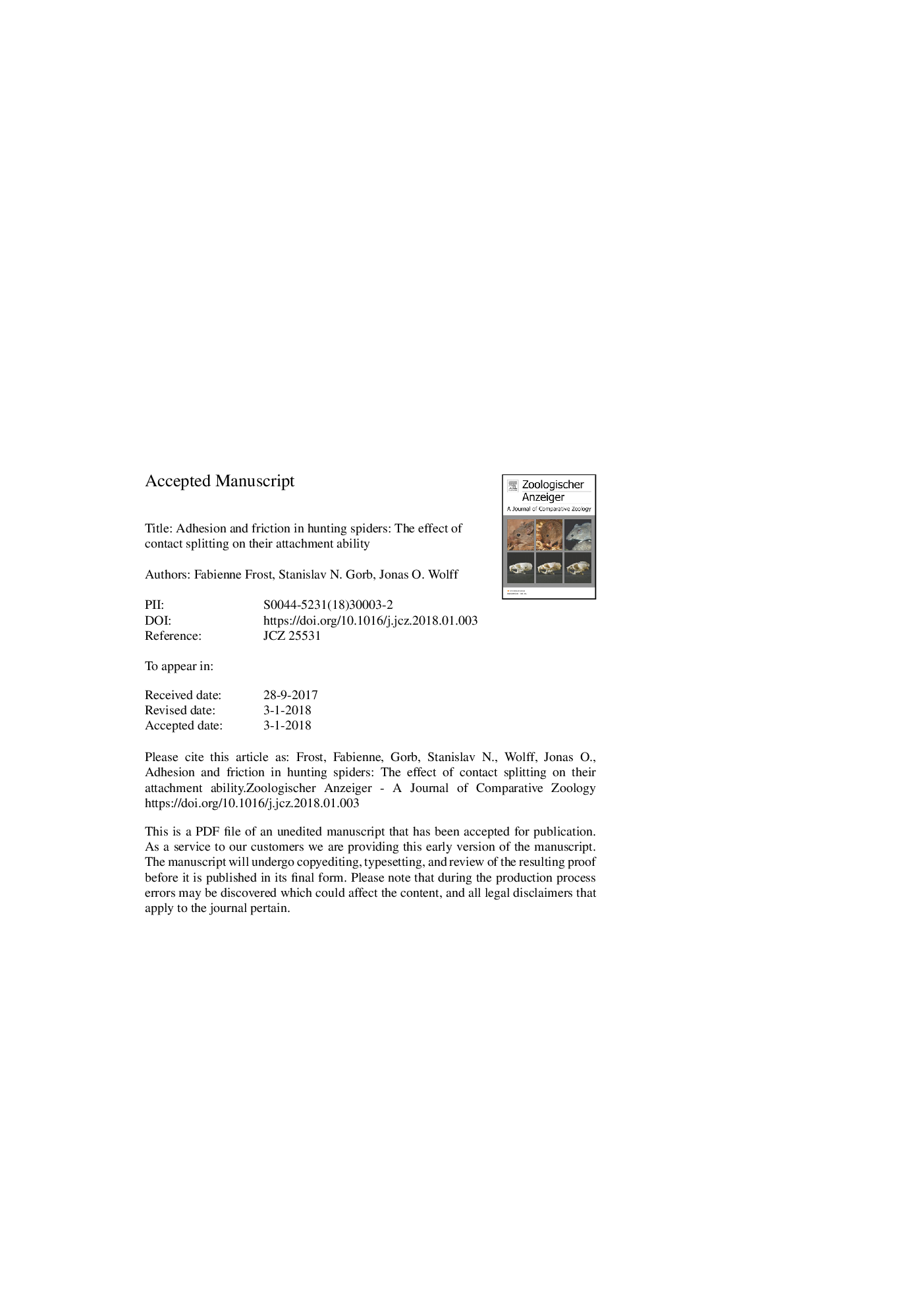| کد مقاله | کد نشریه | سال انتشار | مقاله انگلیسی | نسخه تمام متن |
|---|---|---|---|---|
| 8626828 | 1568602 | 2018 | 23 صفحه PDF | دانلود رایگان |
عنوان انگلیسی مقاله ISI
Adhesion and friction in hunting spiders: The effect of contact splitting on their attachment ability
ترجمه فارسی عنوان
چسبندگی و اصطکاک در عنکبوت شکار: اثر تقسیم تماس بر توانایی دلبستگی آنها
دانلود مقاله + سفارش ترجمه
دانلود مقاله ISI انگلیسی
رایگان برای ایرانیان
کلمات کلیدی
موضوعات مرتبط
علوم زیستی و بیوفناوری
علوم کشاورزی و بیولوژیک
علوم دامی و جانورشناسی
چکیده انگلیسی
Adhesive foot pads (claw tufts) of spiders consist of hair-like setae representing a two-leveled hierarchical structure, which provides strong attachment to a wide variety of surfaces. Several previous studies on adhesive foot pads concentrated on the function of the terminal contact elements (spatulae) for adhesion and friction, whereas the role of the higher hierarchical level (setae) remained largely unknown. In the present paper, we examined the influence of both setal width and the density of the setal array on attachment and on the ability to adapt to rough substrate surfaces in three hunting spider species that differ in the configuration of the adhesive foot pads: Zoropsis spinimana (Zoropsidae), Cupiennius salei (Ctenidae) and Anyphaena accentuata (Anyphaenidae). We found that spiders with denser and smaller setal tips gained higher vertical pull-off strength (adhesion per total contacting pad area) and traction force (friction) on smooth surfaces. Traction force experiments on surfaces with different roughness revealed a strong friction reduction on substrates with a mean asperity size of 1 μm. This supports previous studies that demonstrated the existence of a critical roughness that is equivalent to or smaller than the dimension of spatulae. There was no significant difference in traction forces between smooth surfaces and surfaces with asperities comparable to the dimensions of setal tips (9 and 12 μm). This suggests that the setal level is less decisive for the adaptability to the substrate geometry than the spatula level, especially at small length scales of surface roughness.
ناشر
Database: Elsevier - ScienceDirect (ساینس دایرکت)
Journal: Zoologischer Anzeiger - Volume 273, March 2018, Pages 231-239
Journal: Zoologischer Anzeiger - Volume 273, March 2018, Pages 231-239
نویسندگان
Kim F. Frost, Stanislav N. Gorb, Jonas O. Wolff,
